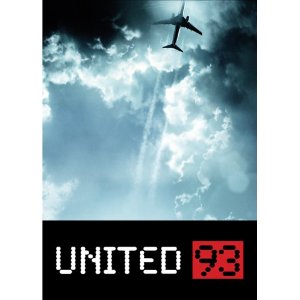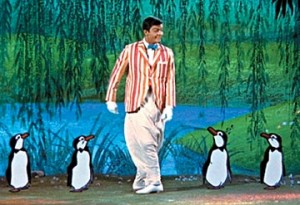The Pursuit of Happyness
Posted on December 11, 2006 at 12:20 pm
B| Lowest Recommended Age: | Middle School |
| MPAA Rating: | Rated PG-13 for some language. |
| Profanity: | Some mild language, f-word visible in graffiti |
| Alcohol/ Drugs: | Smoking |
| Violence/ Scariness: | Sad and disturbing situations, character hit by car |
| Diversity Issues: | An unstated theme of the movie |
| Date Released to Theaters: | 2006 |
| Date Released to DVD: | May 27, 2013 |
| Amazon.com ASIN: | B000N6U0E2 |
This week’s release of “After Earth,” starring Will Smith and his son Jaden, is a good time to take another look at their first co-starring film, based on a real-life father and son:
If a man goes from homeless single dad to multi-millionaire stockbroker, you know there has to be a movie. This one has the good sense to star Will Smith and his real-life son Jaden.
Their natural chemistry and Smith’s natural charisma help this story work.
The story does not have the usual feel-good arc. Even though it omits some of the real-life obstacles and setbacks faced by its main character, it is still more grounded in what happened than in the established beats of narrative and the conventions of story. So even the considerable charms of both Smith and the personable character he plays may not be enough to keep audiences from growing impatient to get to the good stuff.
Chris Gardner (Smith) is a Navy vet, first in his high school class and good with numbers. But his decision to invest everything he had in a portable bone density scanner “that takes a slightly better picture for twice the money” has left his family in a financial position that teeters between precarious and dire. His wife (Thandie Newton) is tired of pulling double shifts and bitter about the way their dream of the future seems to be impossible. She loves their son, but feels overwhelmed. Gardner has to sell two of the heavy machines a month to be able to pay the rent. He is determined to sell them all, but for both of them, the machines he lugs around are like anchors or leg irons.
Chris has one dream that is even more important to him than selling the scanners. He wants to be the father he never had. And he is devoted to his son, endlessly patient and involved. But when his wife leaves, everything begins to slip away. He loses his apartment. And there’s no panic as deep as the fear of not being able to care for your children.
Chris sees a man with a great car and asks what he does. When the man says he is a stockbroker, Chris decides to apply for an internship at Dean Witter.
There are a few obstacles. Chris does not have a college degree. He has no background in the stock market. The internship is six months of intense, demanding, and unpaid work, competing with dozens of others who have more time and better educations. And at the end, only one may be offered a job. Oh, and Chris shows up for the interview covered with paint, in a t-shirt and battered pants. Why? Because he spent the night in jail due to unpaid parking tickets and didn’t have time to change.
His unpretentious charm — and mastery of the then-brand new Rubik’s Cube — gets him the job. And then things get really tough as Chris and his son become homeless and have to spend nights in a shelter or riding public transportation. Chris is handed two near-impossible tasks — to master the fine points of securities analysis and to make cold calls to a list of prospects and turn them into clients. He has a supervisor who keeps sending him for coffee. And while the other interns work late, he has to be at the shelter by 5:00 to make sure he gets in.
Smith has the courage to turn the pilot light down on his powerful movie star charisma and let us see that despite Chris’ intelligence, optimism, and drive, he is vulnerable and scared.
Parents should know that the movie has some tense and unhappy moments that may be disturbing for some audience members, including the break-up of a marriage. A character gets hit by a car.
Families who see this movie should talk about why the word “happiness” is misspelled in the title, when spelling it correctly was so imporant to Chris. What do you learn about him from the way he pursued the stolen scanners? From his decision to sell the scanners in the first place? From the way he handled the job interview? Why did he tell his son not to dream of playing basketball? What was the most important factor in his success? They should talk about how Chris was constantly teaching his son. And they should talk about the insensitivity people showed Chris because they had no idea of his situation; one of the movie’s most important lessons is that we should always remember that we do not know what anyone else is dealing with when we form our expectations.
Families who enjoy this movie will also enjoy Erin Brockovich (some mature material) and Rudy (some strong language).



